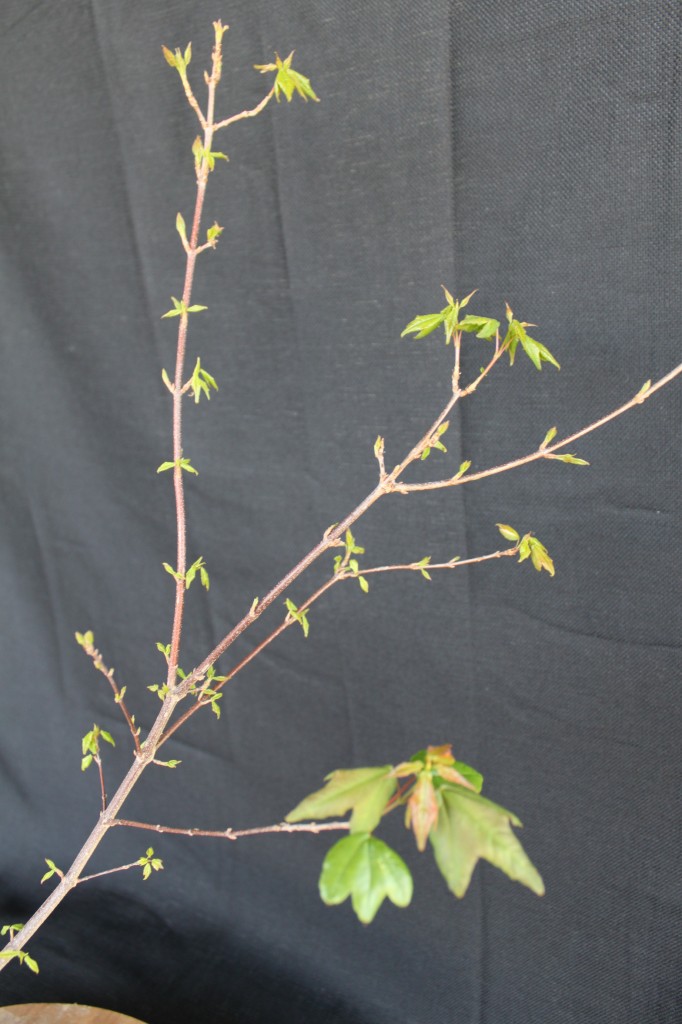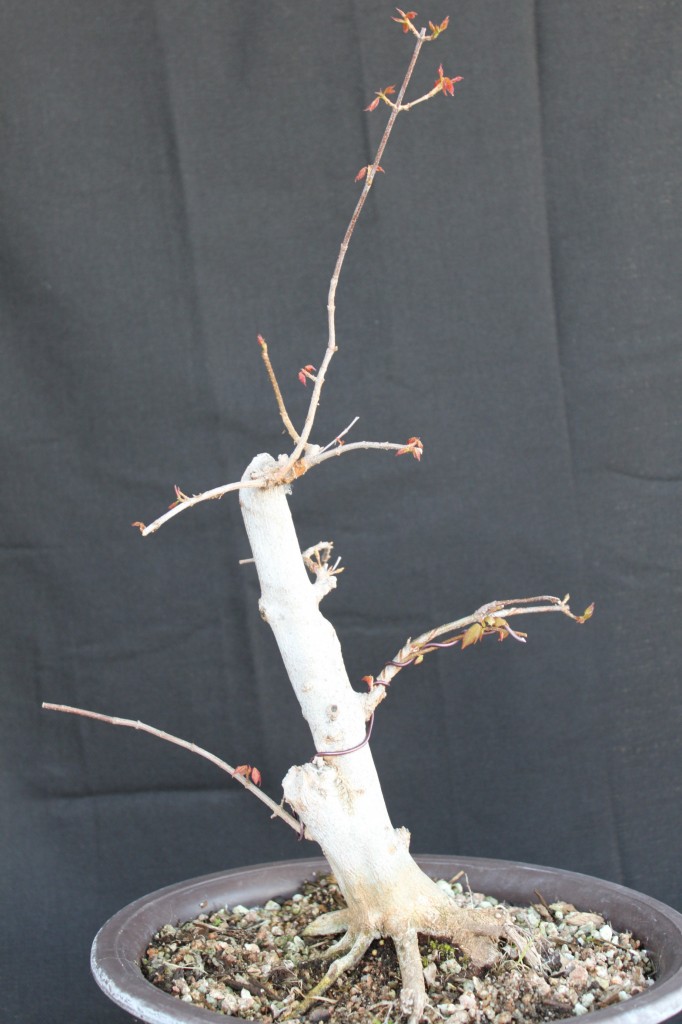Trident Maple Bonsai
Trident Maple Bonsai
If you like thick trunks, the Trident Maple is the tree for you. This fast growing maple builds thick trunks more easily than just about any other species of bonsai, and trees with amazingly massive trunks can be constructed (that’s right, constructed) by planting a Trident Maple in the ground, and then repeatedly chopping back the trunk.
Background:
Trident Maple (Acer Buergerianum) is native to Eastern China and Taiwan. In nature it is a small to medium sized deciduous tree, reaching 15 to 60 feet in height. It was introduced to Japan in ancient times, and since then has been extensively used for bonsai. In Japanese, the Trident Maple is called the “China Maple.” The Trident Maple was introduced to nurseries and gardens in Europe and North America in 1896. It is cold hardy to Zone 5, making it a popular tree for large gardens and parks in temperate areas.
Where to Get One:
Bonsai nurseries and landscape nurseries in most temperate regions will carry specimens. Some large internet bonsai nurseries also sell and ship specimens. Trident Maple can be propagated from seed, or from thick cuttings, but cuttings typically require humidity and bottom heat.
What to Do After You Get It:
Put it in a tub or in the ground, fatten it up and chop it back until you have the mass of wood that you want. Trident Maples grow fast, when they are given the right soil and nutrients. Ten feet of growth on the lead shoots is not unheard of. One note: In some climates, chopping back to a bare stump is not a good idea. When you do a trunk chop on a Trident Maple, it is prudent to leave a small amount of foliage, so the tree can reestablish itself.
Soil and Potting:
In the landscape Trident Maples tolerate a wide range of soils, from clay to sand to loam, but as bonsai they like free draining soil, and because they are broadleaf trees they do need some organic matter in the soil – usually about 40 percent. Aggregate can be Akadama, coarse sand, decomposed granite, pumice, turface or diatomite.
Trident Maples will tolerate heavy root pruning, but this must be done in the early spring, before leaf buds start to swell. While they will survive being repotted later in the spring, after leaves appear, repotting one at this time will arrest growth for the rest of the season.
As with Japanese Maples, Trident Maples produce fall color, and you can pot them in glazed pots. In fact, the Japanese prefer glazed pots (usually cream in color) for Trident Maples.
Siting and Watering:
Trident Maples will tolerate some sun, but they will need sufficient soil and moisture reserves to deal with the heat if they are kept in the sun. For this reason, a Trident Maple should not be kept in the sun unless it is in a deep pot. If the soil drainage is good enough, a Trident Maple should be watered every day in warm weather, and every other day or every third day in cooler weather.
Pruning and Shaping:
Trident Maples respond well to pruning, and will issue a profusion of growth from the cut site if a large branch is cut. The standard technique for forming a heavy trunk is to put one in the ground and chop back all growth until the desired mass is achieved. Ramification is easy to achieve by pruning branches back to one or two nodes. Be careful in wiring. Old wood is stiff, and although it will not snap, it will fracture internally, and when the tree heals it will produce an ugly swelling at the fracture site. It is best to wire only young growth, and remove the wire when it takes a set. Trident Maples typically send out long shoots, and they thicken fast, so be prepared to remove the wire later in the same season it is applied.
Pests and Diseases:
Trident Maples are very disease resistant, and the only threats a bonsai grower needs to worry about are aphids on the new growth, and root rot. The threat of root rot can be eliminated by using free draining soil, and never allowing the tree to become waterlogged.
Closing Remarks:
Trident Maple is a good beginner tree. It is not fussy with its soil requirements, and it can be shaped by pruning, with wiring only necessary for initial shaping of the branches. Since it grows fast, a beginner will not lose patience with it, and it is easy to create a specimen with a thick trunk in a relatively short period of time.



